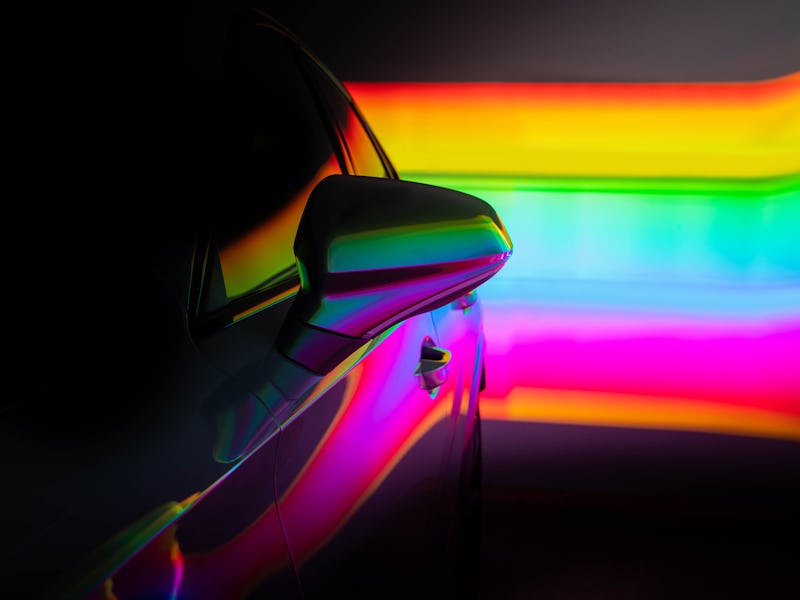This self-healing material could fix your dinged-up car in 30 minutes
Good news for people who can’t park.

Pesky scratches from fellow drivers (who don’t always leave a note) could become a thing of the past: Scientists created a new material that heals itself within 30 minutes when exposed to sunlight. If incorporated into cars, it could act as an insurance policy for those who must parallel park in crowded cities or maneuver their way into narrow garages as part of the daily commute.
Researchers tested their innovative transparent coating material on a model car in midday sunlight and found that scratches on the car’s surface completely disappeared, as reported in a new paper. It’s already possible to coat your car in a protective shield that reduces the risk of a scratch damaging the paint and exposing the car to rust. Still, it doesn’t necessarily eliminate the surface imperfection. This invention, by contrast, would erase any evidence of a blemish.
What’s new — Scientists had developed self-healing materials in the past with the help of photothermal dyes, which absorb light and convert it into heat. When lit up, the dyes heat up, and the coating’s polymer structure separates and recombines, erasing any blemishes in the outer surface.
But in these past experiments, researchers typically worked with inorganic dyes, which don’t usually contain carbon. These aren’t ideal for car manufacturing, partly because they require a relatively large amount of light energy to work and because they aren’t transparent. But in the new experiment, a team from the Korea Research Institute of Chemical Technology describe a solution that could make your whip look as smooth as its ride.
Researchers from the Korea Research Institute of Chemical Technology tested a new self-healing coating on this car and found that it eliminated scratches within 30 minutes when exposed to sunlight.
The discovery — The new material incorporates transparent organic dyes that absorb near-infrared light, which makes up less than 10 percent of midday sunlight. Because the dyes are also colorless, they can blend easily with any paint job — even a cherry-red BMW convertible or an acid yellow Hummer.
The researchers upgraded an existing commercial coating resin with the organic dyes and a reversible polymer network material, which rebuilds the surface structure after the coating heats up.
The nifty material will likely be used to coat vehicles and electronic devices like smartphones and computers — because who hasn’t smashed up their screen a few times? It could also be used in building materials to protect facades. Ultimately, the innovative coating could reduce the use of toxic organic solvents often found in vehicle paints.
“It is expected to be widely used not only in automotive clearcoats but also in various applications,” research director Jin Chul Kim says in a press release.
On the horizon ...
Researchers may have identified a stem cell therapy for some forms of genetic blindness that previously evaded treatment.
While scientists have been working on cell therapies for blindness for over three decades, they often fail because the implanted cells die or can’t incorporate themselves properly into the eyes. Gene therapies are another option for genetic cases of blindness, but they don’t work for everyone because we don’t yet know all of the genes responsible for these conditions in the first place.
But a recent experiment on dogs, who provide a better human model for this purpose than the rodents used in many medical studies, may hold the key to managing these difficult-to-treat conditions. Researchers enlisted these pups to test out a new stem cell therapy — it works by dosing human stem cells with chemicals to coax them into forming the precursors of photoreceptors, which convert light into signals that are sent into the brain, then injecting them into the retina.
Amazingly, the immature cells matured into photoreceptors, suggesting that the layer of the retina that contains rod and cone photoreceptors can be regenerated in adult humans. “This provides hope for being able to treat patients even in adulthood,” senior study author William Beltran, a veterinary ophthalmologist and vision scientist at the University of Pennsylvania, tells Inverse.
Read the full story to find out more.
Here’s what else we’re reading...
- The market for dead solar panels could reach $2.7 billion by 2030. Read more at Good News Network.
- Robot cooks are quickly infiltrating restaurant kitchens. CNBC reports.
- This mechanic is converting classic cars into EVs. Euronews has the details.
- NASA’s DART Spacecraft Could Obliterate Asteroids. The damage may be worse than previously believed, according to SciTechDaily.
- Baidu’s robotaxis can now operate safely sans driver. Engadget dives in.